The History of Water Cooling
It's easy to think that water cooling is a fairly new thing on the computer scene. I mean, I'm going to guess that your old mid 1990s Packard Bell didn't have an AIO liquid cooler. But it turns out that water cooling has been around for a really long time. In fact, all the way back in the mid 1960s, IBM had a line of mainframes called the System/360 that featured built-in liquid cooling.
Although many System/360 models couldn't even handle 1 million instructions per second. Being older computers, they still generated enough heat to justify liquid cooling. You could even buy an optional water tank for the mainframe.
Some early supercomputers also used liquid cooling, such as the Cray-2 from 1995 which actually had its components dunked in a special fluid that wouldn't conduct electricity.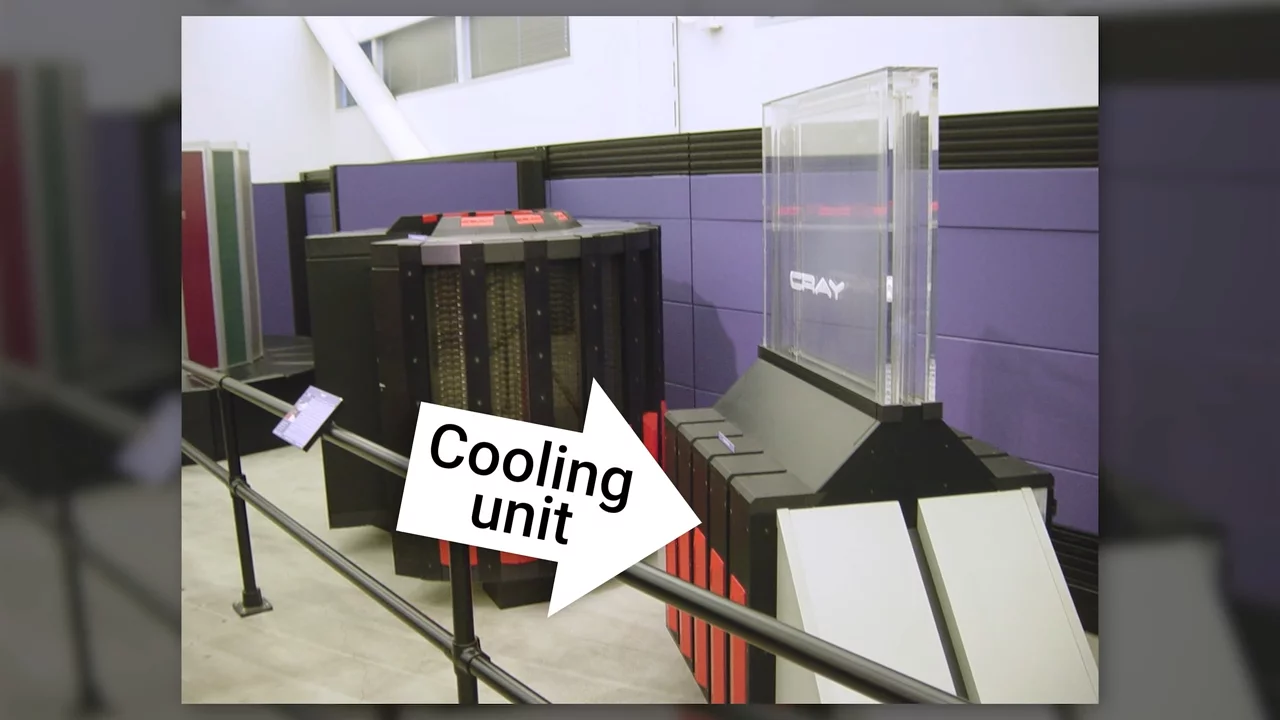 But as the years went on, new types of semiconductors and ever shrinking transistors make computers a lot more power efficient. Meaning that they give off less heat. The result was that it started making more sense to air cool servers. Even though air isn't as good as water at carrying away heat, air cooling was cheaper and you didn't have the risk of leaks.
But as the years went on, new types of semiconductors and ever shrinking transistors make computers a lot more power efficient. Meaning that they give off less heat. The result was that it started making more sense to air cool servers. Even though air isn't as good as water at carrying away heat, air cooling was cheaper and you didn't have the risk of leaks.
And speaking of cheaper, it didn't make much sense to water cool early home PCs either as they were already quite expensive and most home users simply wouldn't benefit from it.
But as people started to do more with their PCs, water cooling at home started to emerge in the 1990s. However, these early water cooling solutions were almost entirely the realm of enthusiasts as they were usually homemade. Intrepid users repurposed materials like drink bottles, pumps from fish tanks and automotive radiators to cool down their CPU's.
And water blocks themselves could even be fashioned from smaller heat sinks by sealing a CPU cooler inside a housing with a strong glue or epoxy to prevent water leaks and then adding connections to allow water to flow and basically flood the heat sink. 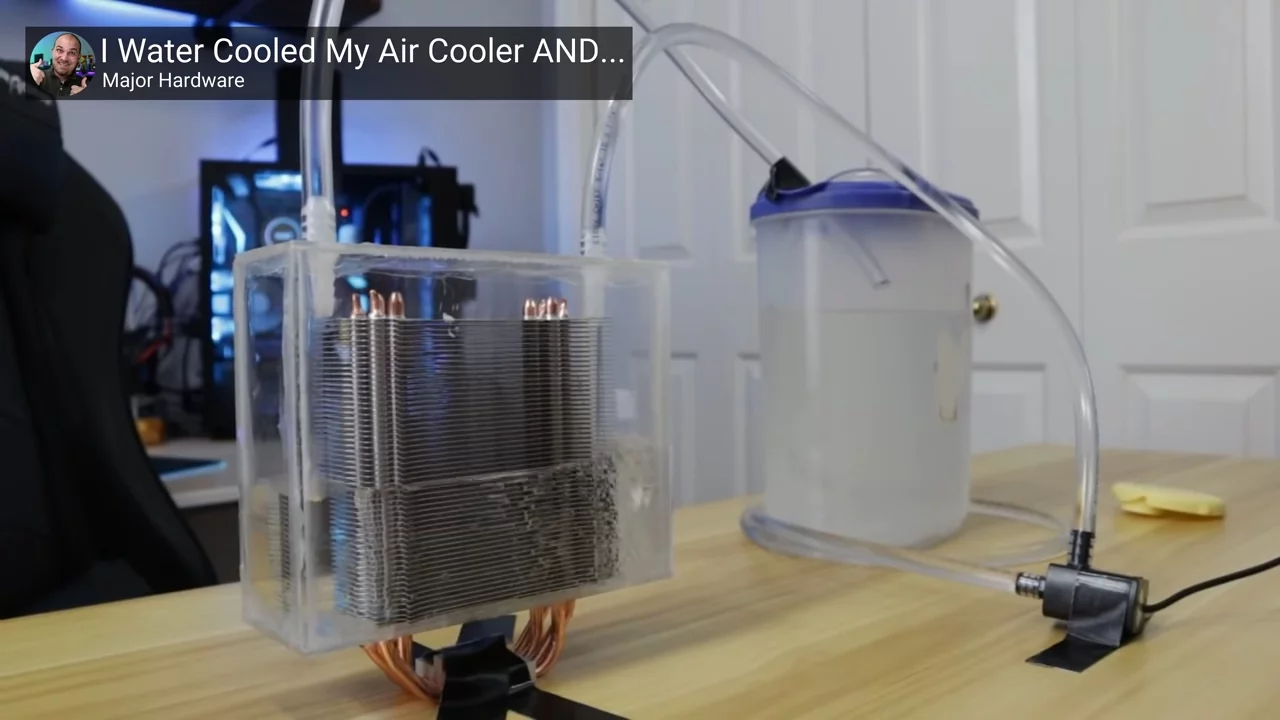 Various designs were used by home enthusiasts until about the beginning of the 2000s, when a retail market for water coolers began to depreciate.
Various designs were used by home enthusiasts until about the beginning of the 2000s, when a retail market for water coolers began to depreciate.
A good early example is the Asetek WaterChill, which was an AIO kit that wasn't closed loop. 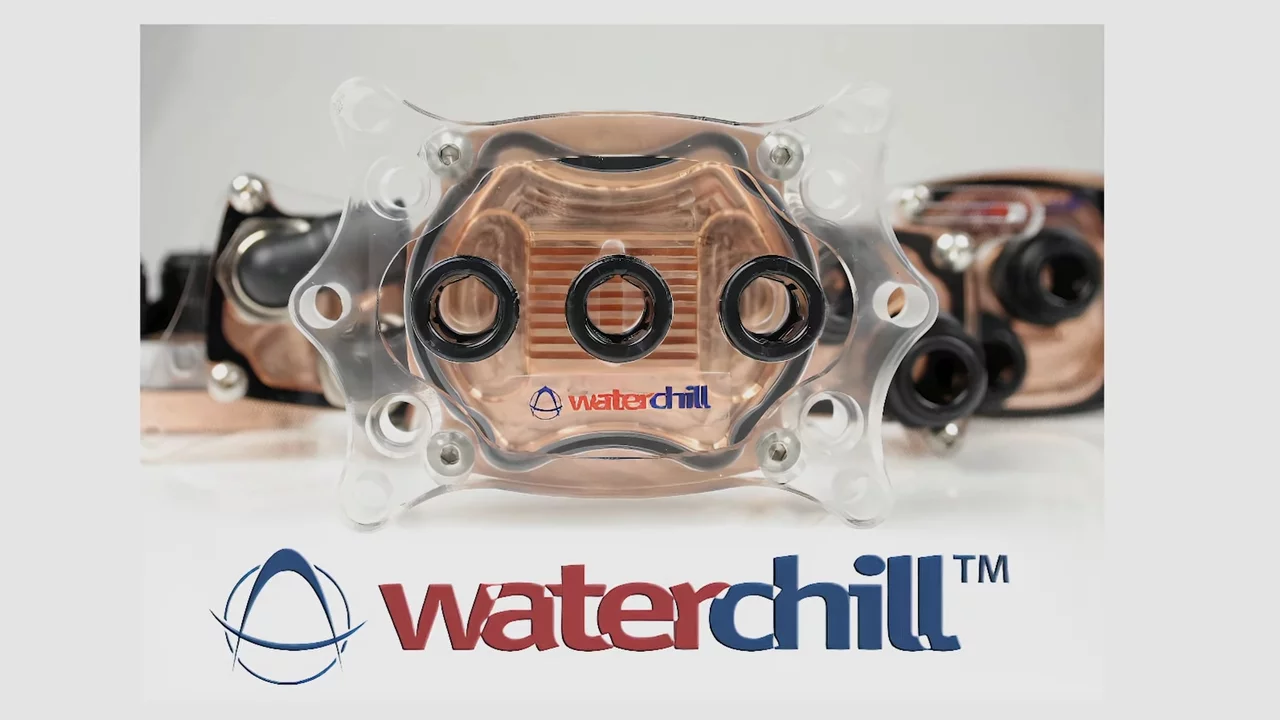 Instead, it came as a very utilitarian looking set of components you put together and fill with water yourself. Including plain clear tubing and a radiator fan combo that looks similar to a tower-style air cooler. The water block also had a simple pattern in it that would encourage turbulent flow to improved cooling.
Instead, it came as a very utilitarian looking set of components you put together and fill with water yourself. Including plain clear tubing and a radiator fan combo that looks similar to a tower-style air cooler. The water block also had a simple pattern in it that would encourage turbulent flow to improved cooling.
And as time went on, professionally made water coolers would deliver better performance than homemade solutions partly due to more intricate engineering of the water blocks to optimize thermal management. 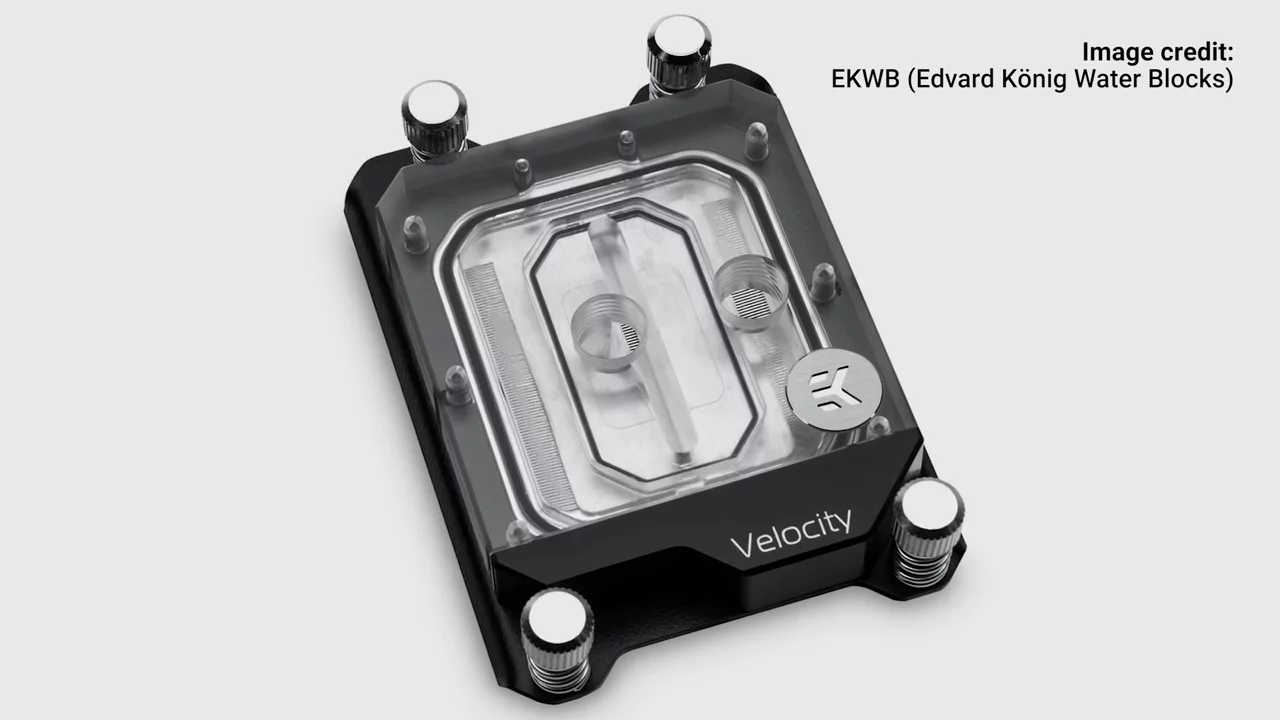 This was the era where we started to see water cooling become more common among PC enthusiasts. And you saw things like those totally clear cases with colored tubes going this way and that rather than the super clean setups up today.
This was the era where we started to see water cooling become more common among PC enthusiasts. And you saw things like those totally clear cases with colored tubes going this way and that rather than the super clean setups up today. 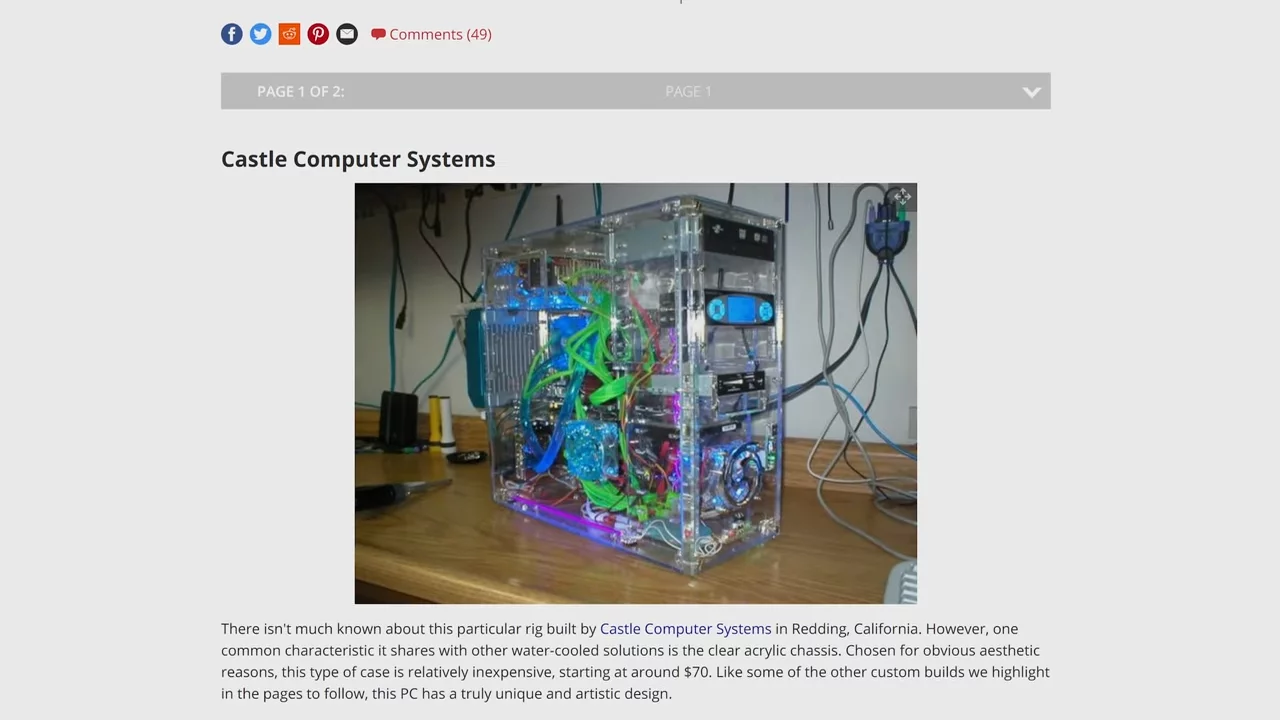 Even Apple got into the water cooling scene as their Power Mac G5 from 2004 became the first consumer PC to include liquid cooling default on some models.
Even Apple got into the water cooling scene as their Power Mac G5 from 2004 became the first consumer PC to include liquid cooling default on some models.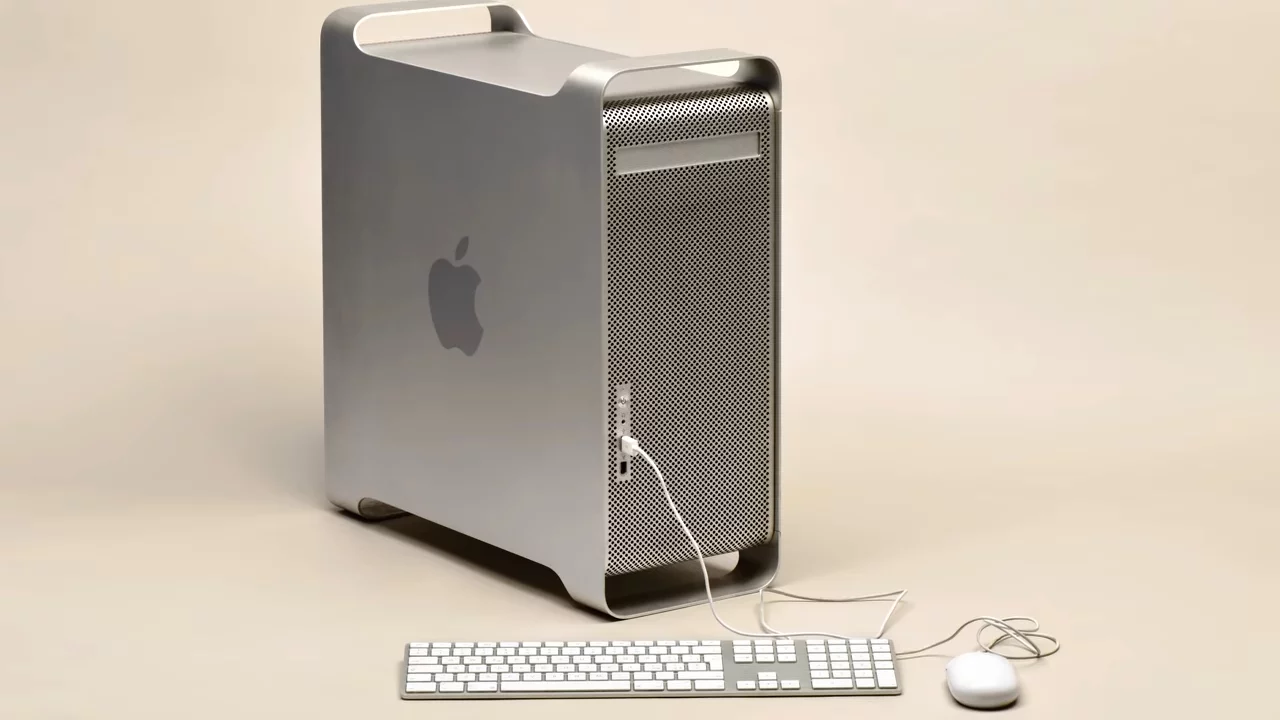 Who'd have thunk it. In subsequent years, the rise of easy overclocking fueled even more demand for efficient CPU cooling.
Who'd have thunk it. In subsequent years, the rise of easy overclocking fueled even more demand for efficient CPU cooling.
As overclocking became a matter of simply tweaking a couple of settings in the bios and rebooting your system, a market sprang up for hassle-free water cooling giving rise to the first closed loop cooler in 2006, also an Asetek creation. 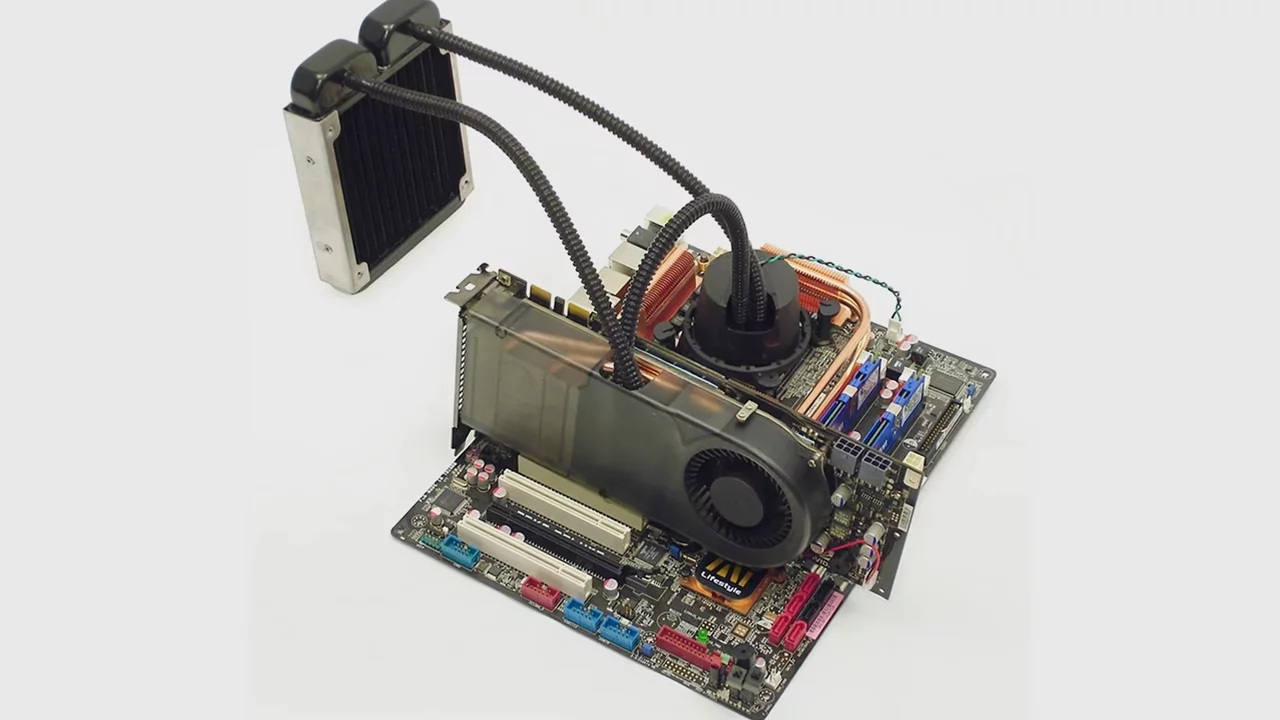 Since then, many more companies have gotten into the AIO game. And there's also a thriving market for custom loop components for those who want the best possible performance and Instagram or the glam shots of their rigs.
Since then, many more companies have gotten into the AIO game. And there's also a thriving market for custom loop components for those who want the best possible performance and Instagram or the glam shots of their rigs.
In case you have found a mistake in the text, please send a message to the author by selecting the mistake and pressing Ctrl-Enter.
ncG1vNJzZmislZi1sbjAp5ytZqSksaLFjqmmrKxfqbWmeceiqq2noq56sLKMsJitnaJisLC7y6KloA%3D%3D